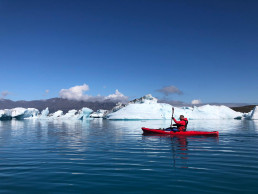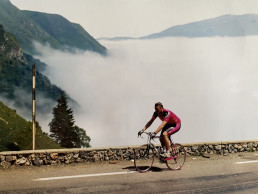The new viking legends of sports
The land of trolls, Björk, vikings, geysers and volcanoes. Yes, I was in Iceland. I picked it as my holiday destination this year, and I came back home just a couple of days ago. Honestly, I couldn’t be happier with my decision to explore this very talked about yet mysterious country.
I spent a total of eight days travelling around the island, four of which I stayed in the capital, Reykjavik. I was totally mind blown, and not only because of the scenic beauty. We usually associate Iceland with its more natural features and peculiar landscape, but among its many other faces there is one we can’t ignore: its importance in terms of sports. Iceland has a population of only 360.000 people, but it’s a huge sports nation. As such, however, Iceland appeared on our radar fairly recently with their performance in the UEFA Euro 2016. The viking team beat England 2:1, and the broadcasting of the match was the highest TV rating ever noticed for one single country: of all the televisions that were on in Iceland during the event, only 0.2 percent were watching something else.
As you know by now, sports are pretty important for Icelanders -football, handball, basketball are the favorites-, and star athletes are often seen as national heroes. On my way to the north of the island I visited Akureyri, the country’s second largest city. According to Wikipedia and the proud locals, the “greatest sons of the city“ are athletes such as the famous football player Birkir Bjarnason and six handball players; Alfred Gislasson among them, who’s the current coach for the German handball national team.
Since most local players go abroad (license fees for sports leagues in Iceland are very low due to the small population), we often see many Icelandic names in teams like FC Barcelona, Liverpool, Bologna and FC Zürich. At the moment it’s clear to everyone that Icelandic football is having its moment of glory, and i
Tour de France 2020: are sporting events without spectators the future?
We're all used to images of what the world of sporting events was like until just a few months ago: spectators and fans as far as the eye can see. Isn’t it crazy how quickly things have changed in the past months for both sports fans and event organizers?
Initially planned for the 27th of June and reprogrammed due to the coronavirus pandemic, the Tour de France 2020 was started a couple of days ago with the Grand Départ taking place in Nice. It will cover the 3.470 km between Nice and Paris, going through more than 500 cities and picturesque villages in southern France, with the finish date being the 20th of September. This world-famous bicycle race is known for bringing together more than 12 million people each year, not to mention the 4500 souls working to make the event happen between riders, teams, organizers, journalists, sponsors, and staff.
This year, though, things will be a bit different: the Tour de France will be held without spectators for the first time in its history. During the 1990s and a good part of the 2000s, I was myself 15 times a commentator and presenter of the Tour de France for the German broadcaster ARD, and the image of the ocean of spectators is still imprinted on my memory. It is very hard to imagine that this event is taking place and there will be no people flooding the streets to enjoy the race and cheer for their favorites. But this is the new reality for the world of sports at the moment. Does this mean we are headed for a future of sporting events without spectators?
As much as I would like to share the definitive answer to this question with you, the truth is that all of us are adjusting to completely new game rules that are being set as we go. Our best bet right now is to be more mindful of the risks involving big gatherings of fans, developing new tools and protocols to tackle this unprecedented situation, and more importantly, staying hopeful for the future.


